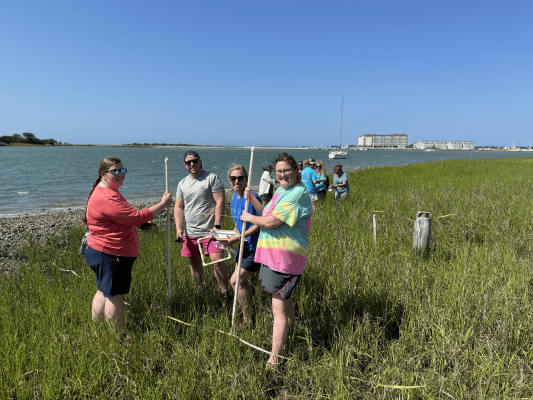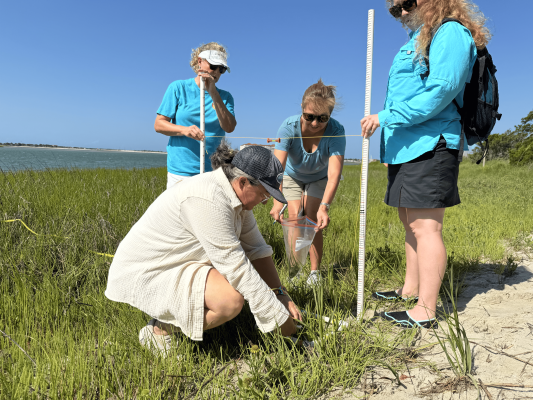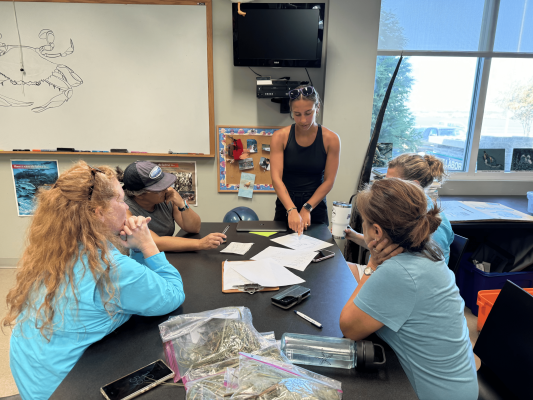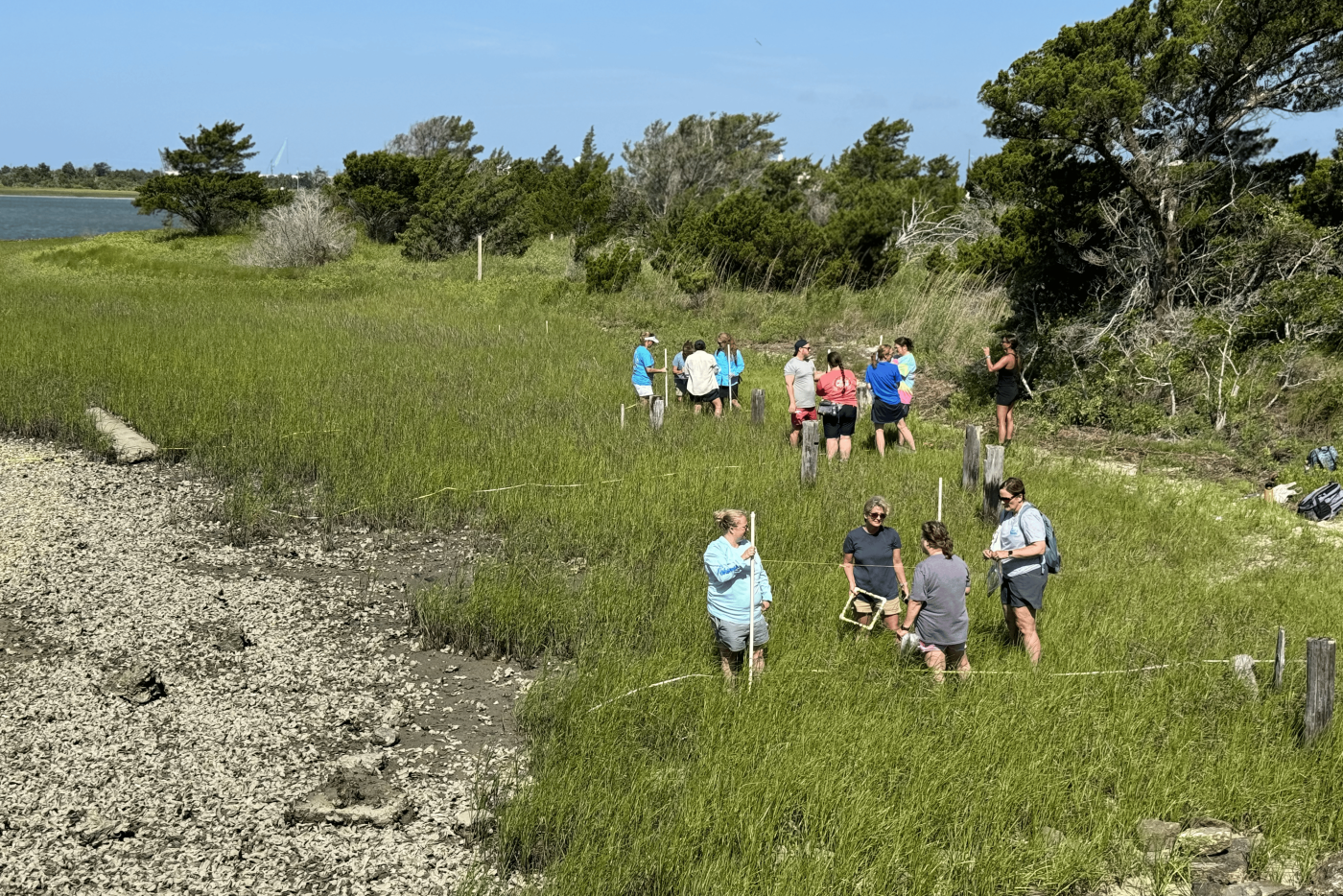Author: Jillian Daly
Mina Surprenant is the N.C. Coastal Reserve and National Estuarine Research Reserve’s 2024-2026 Margaret A. Davidson fellow. This two-year fellowship funds a graduate student's research that addresses a key reserve management need, helping scientists and communities understand coastal challenges. Mina, a PhD student in the University of North Carolina - Wilmington’s Wetland Ecology Lab, is studying the effects of sea-level rise on our tidal marshes using drones to visualize change.

Mina partnered with our education coordinator to create a lesson plan based on her research. Together, they decided to test the lesson plan on teachers during the annual Teachers on the Estuary workshop so Mina could receive feedback from the teachers before doing the lesson with students.
On day two of the workshop, the teachers got out in the field first thing in the morning to collect data. Using the data they collected, they will be able to understand marsh structure and dynamics. But first, Mina went over the basics of salt marshes.

To begin, teachers and students need to understand why marshes are important. Do you like eating shrimp? Blue crabs? Fish? One reason we want healthy marshes is that they provide vital habitat for the seafood we enjoy eating. They also sequester carbon out of the air into the soil, providing an important local carbon sink. By managing marshes into the future, we will be protecting these natural benefits.
Marshes naturally build in elevation or “accrete” with the inflow of tidal waters. When the tide floods, the marsh grass slows the water down, and sediment particles are able to settle, leading to accretion! This process is necessary for the marsh to keep pace with sea-level rise. It is important for us to study these plants because they play a major role in helping the marsh accrete. Recent predictions show that sea-level rise is happening at a faster rate than marshes can accrete, forcing these ecosystems to migrate landward or else they will drown. However, development including sea walls, roads, and homes become a hardened barrier to marsh migration, which could lead to a loss of marsh. The main plant found in our salt marshes is Spartina alterniflora, or salt marsh cordgrass. This unique plant has adapted a way to live in salt water by essentially sweating out the salt it takes in with the water. While they grow in the wet, intertidal areas of our coast, they must stay partially out of the water to survive. That’s why there is an elevation sweet spot in the marsh where these plants grow best, where there is just the right amount of tidal inundation. Knowing the elevation sweet spot for marshes will help us understand where marshes will migrate to as sea level rises. This research, with the support of coastal communities and landowners, will benefit the management of these ecosystems to protect the numerous services they provide.


This graph of a marsh profile shows the elevation sweet spot in the blue rectangle. As you can see, with a decrease in elevation, the marsh becomes unstable. As sea level rises, the marsh will feel the effects of high-tide waters flooding it more frequently.
With an understanding of the elevation sweet spot, the teachers set out to collect their own marsh data. Using poles, string, and meter sticks, the teachers measure the change in elevation of the marsh. With that data, they can create their marsh profile later in the classroom. They also collect aboveground plant biomass, which entails, as Mina puts it, giving the marsh a haircut.

Back in the classroom, the marsh profiles are drawn out, and the plant material is weighed and measured. The end of the lesson resulted in smiling teachers and feedback for Mina as she continues to refine this lesson plan for future presentations. She hopes it will teach students the importance of the marsh ecosystem and the natural benefits it provides to our coastal communities. The ultimate goal is to foster stewardship of this important habitat, as these students are our next generation of coastal scientists and resource managers!

